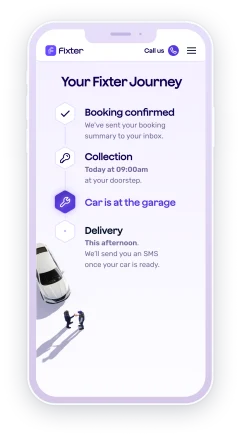Knowing how to check your car's serpentine belt is an essential skill for any vehicle owner, ensuring your car runs smoothly and avoiding potential breakdowns. The serpentine belt is a critical component, responsible for powering various systems such as the alternator, power steering pump, and air conditioning compressor. Over time, this belt can wear out or become damaged, which can lead to serious issues if not addressed. In this guide, we will walk you through a straightforward, step-by-step process to inspect your serpentine belt for any signs of wear and tear. With a bit of confidence and the right approach, you'll be able to maintain your car's performance and keep it in top condition.
Understanding the Serpentine Belt
What is a Serpentine Belt?
A serpentine belt is a continuous belt used in vehicle engines to drive several peripheral devices. These devices include the alternator, power steering pump, water pump, air conditioning compressor, and sometimes the radiator cooling fan. Unlike older vehicles that used multiple belts, modern engines use a single serpentine belt, which makes maintenance simpler. The belt itself is typically made from reinforced rubber, designed to withstand heat and friction. Its name derives from the way it winds around various pulleys in the engine, resembling a snake. Over time, wear and tear can cause the belt to crack or fray, leading to possible engine malfunctions. Therefore, it is crucial to regularly inspect your serpentine belt, ensure its proper tension, and replace it as necessary to maintain your vehicle's efficiency and reliability.
Importance in Vehicle Function
The serpentine belt plays a pivotal role in the operation of your vehicle by powering multiple vital components. Without it, the alternator cannot charge the battery, resulting in electrical failures. Similarly, the power steering pump would cease to function, making steering difficult and potentially dangerous. The belt also drives the air conditioning system, crucial for maintaining a comfortable cabin environment. Moreover, in some vehicles, it aids in cooling the engine by driving the water pump. A malfunctioning serpentine belt can lead to overheating engine itself, loss of power steering, and electrical system failures, which can culminate in a breakdown. Hence, the belt is integral to keeping the engine and its accessories running smoothly. Regular inspections ensure that any signs of wear are addressed promptly, preventing costly repairs and maintaining the vehicle's overall performance and safety.
Common Signs of Wear
Identifying signs of wear on your serpentine belt early can prevent unexpected breakdowns. One of the most noticeable indicators is a squealing noise coming from the engine bay, often a belt failure due to slipping or misalignment. Visible cracks, fraying, or splits on the belt's surface indicate that the material is deteriorating. Another sign is a glazed or shiny appearance, which suggests the belt has become hardened and less flexible. Additionally, notice if the belt seems loose, which could be due to a worn tensioner or the belt itself stretching over time. If you experience sudden power loss in systems like the power steering or air conditioning, it might point to a failing serpentine belt. Regularly checking for these signs helps maintain your vehicle's reliability. Addressing any issues promptly can save you from the inconvenience and expense of a breakdown.

Preparing for Inspection
Tools You'll Need
Before inspecting your serpentine belt, gather the necessary tools to ensure a smooth process. You'll need a flashlight to see clearly in the engine bay and check for any hidden signs of wear. A ratchet or wrench set is essential for adjusting the tensioner if needed. Having a belt tension gauge can be helpful to accurately measure the belt's tension, although it's not strictly necessary for a basic inspection. Gloves will protect your hands from sharp edges and grime. Depending on your vehicle model, a mirror on a telescoping handle might assist in inspecting hard-to-see areas. It is how to inspect your car's serpentine belt for wear and tear and also useful to have a notepad or your phone handy to jot down any observations. Having these tools ready will make the inspection more efficient and thorough, helping you identify any issues with your serpentine belt promptly.
Safety Precautions
When inspecting your serpentine belt, safety should be your foremost concern. First, ensure the vehicle is parked on a stable, flat surface and that the handbrake is engaged to prevent any movement. Before you begin, it's crucial to switch off the engine and let it cool down to avoid burns from hot components. Disconnect the battery's negative terminal to eliminate any risk of electrical shock. Wear safety gloves to protect your hands from sharp or greasy parts. Avoid wearing loose clothing or jewellery that could get caught in engine components. If you're working in a dimly lit area, ensure it's well-lit to clearly see what you're doing. Always be mindful of your surroundings and keep tools and parts organised to prevent tripping hazards. Taking these precautions will help ensure a safe and efficient inspection process.
Locating the Belt
Before you can inspect the serpentine belt, you'll need to locate it within your vehicle's engine bay. Start by opening the bonnet and securing it properly. The serpentine belt is typically found at the front of the engine, winding around various pulleys. You might need to remove or reposition any covers or components that obstruct your view. Consulting your vehicle's manual can provide a helpful diagram of the serpentine belt inspection it's routing, which can guide you in identifying it among other components. In some vehicles, there is a diagram on a sticker located on the underside of the bonnet or near the radiator. This diagram can be especially useful if you're unfamiliar with the engine layout. Once you've identified the belt, take note of its path around the pulleys, as this will be important if any adjustments or replacements are necessary.
Inspecting the Serpentine Belt
Visual Inspection Tips
Conducting a visual inspection of your serpentine belt is a straightforward process that can reveal significant wear and tear. Begin by examining the entire length of the serpentine belt inspected see for any visible cracks, splits, or fraying edges. A belt in good condition should be smooth and free of any damage. Check for a glazed or shiny appearance, which indicates the belt has hardened and may slip over pulleys. If possible, gently twist the belt to view the underside; this can reveal hidden cracks or damage not visible from the top. Look for any signs of misalignment, which can cause uneven wear. If the belt is not tracking straight on the pulleys, it might be an indication of a problem with the tensioner or pulleys themselves. Conducting this inspection in good lighting will help ensure you do not miss any subtle signs of wear.
Checking for Cracks and Frays
When inspecting your serpentine belt, pay attention to any signs of cracking or fraying, as these are clear indicators of wear. Begin by observing the belt's surface for any visible cracks running across the ribs. These cracks can develop over time due to the constant flexing and exposure to heat. Use a flashlight to enhance visibility, especially in dimly lit areas of the engine bay. If you can safely access the belt, gently twist it to examine the underside for any hidden damage. Fraying typically occurs along the edges of the belt, often caused by misalignment or excessive wear or on the pulleys. If either cracks or frays are present, it's advisable to replace the belt promptly to avoid potential failure. Regularly checking for these signs ensures that your vehicle remains reliable and prevents more costly repairs or breakdowns in the future.
Evaluating Belt Tension
Proper belt tension is crucial for the optimal functioning of the serpentine belt. If it's too loose, it can slip, causing a squealing noise and inefficient performance of connected components. Conversely, if it's too tight, it can lead to premature wear of both the belt and the bearings in the pulleys. To evaluate the tension, press down on the belt midway between two pulleys using your thumb. Ideally, it should deflect slightly, around half an inch, but not excessively. If you have a belt tension gauge, use it to measure the tension accurately according to your vehicle's specifications. Be aware that some modern vehicles are equipped with an automatic belt tensioner, which maintains proper tension without manual adjustment. If you suspect the tension is incorrect and your car has an automatic tensioner, it might be a sign of a worn-out tensioner that needs replacing. Regularly checking tension helps maintain optimal belt performance and longevity.
Diagnosing Potential Issues
Identifying Unusual Noises
Unusual noises coming from the engine bay can be an early warning sign of serpentine belt issues. A high-pitched squealing sound often indicates that the belt is slipping on the pulleys, which could be due to improper tension or a worn-out belt. This noise is typically more pronounced on cold starts or during acceleration. A chirping sound might suggest misalignment, where the belt is not sitting correctly on the pulleys. Rattling or rumbling noises could indicate a problem with the tensioner or one of the pulleys, such as worn bearings. To diagnose the front drive belt issue, carefully listen to the engine with it running, but ensure to keep hands and loose clothing away from moving parts. If you identify any of these noises, it's crucial to address them promptly. Ignoring them can lead to further damage and, ultimately, vehicle breakdown.
Recognising Belt Misalignment
Belt misalignment is a common issue that can lead to premature wear and inefficiency in the serpentine belt system. Recognising this problem early can prevent further damage to the belt and pulleys. To identify misalignment, visually inspect the belt as it runs over the pulleys. The belt should be centred on each pulley, with its edges running parallel to the pulley sides. If you notice the belt riding off-centre or there is uneven wear, misalignment is likely. Additionally, listen for chirping noises, as these can be a symptom of the belt not tracking correctly. Causes of misalignment can include worn bearings in the pulleys, a damaged tensioner, or incorrect installation of the belt. If misalignment is detected, it's essential to address the underlying issue immediately. This might involve realigning the pulleys, replacing worn belt components, or correctly reinstalling the belt to ensure optimal performance and longevity.
When to Seek Professional Help
While many serpentine belt issues can be identified and resolved with a basic inspection, there are times when professional assistance is advisable. If you notice severe wear such as deep cracks, extensive fraying, or if the belt has come off entirely, it's best to consult a mechanic. Persistent unusual noises, despite attempts to adjust or replace the belt, may indicate underlying issues with tensioners or pulleys, which require specialised tools and expertise to diagnose and repair. Similarly, if you're unsure about bad serpentine belt, alignment or tension, a professional can provide accurate assessment and adjustment. Vehicles with complex engine layouts or those that use advanced belt systems, like those incorporating multiple tensioners or idler pulleys, often benefit from expert handling. Seeking professional help not only ensures the problem is correctly addressed but can also prevent additional damage, saving you time and potential expenses in the long run.
Maintenance and Replacement
Regular Maintenance Tips
Regular maintenance of your serpentine belt ensures your vehicle runs efficiently and prevents unexpected failures. Start by routinely checking the belt for visible signs of wear, such as cracks, fraying, or glazing. This should be done every few months or as part of your routine oil change. Keep an ear out for unusual noises, such as squealing, whining noises or chirping, which might indicate slipping or misalignment. Ensuring that the belt is correctly tensioned is crucial; if your vehicle has an automatic tensioner, confirm its proper functioning. Additionally, periodically inspect the pulleys and tensioners for any signs of wear or damage. Clean the belt and pulleys regularly to remove any dirt or debris that could cause premature wear. Follow your vehicle manufacturer's recommendations for belt replacement intervals, typically every 60,000 to 100,000 miles, based on driving conditions. Adhering to these maintenance tips can extend the lifespan of your serpentine belt and ensure your vehicle remains dependable.
When to Replace the Belt
Knowing when to replace your serpentine belt is key to avoiding breakdowns and maintaining vehicle performance. Typically, serpentine belts need replacement every 60,000 to 100,000 miles, though this can vary based on your driving conditions and your vehicle manufacturer’s recommendations. Visible signs of wear, such as deep cracks, fraying edges, or a shiny, glazed surface, indicate the belt is near the end of its life and should be replaced promptly. If you experience persistent squealing noises that adjustments cannot fix, it’s another sign that a new belt may be necessary. Additionally, if the belt has slipped off its pulleys or if the tensioner belt slips or fails to maintain proper tension, a replacement is likely needed. Proactively replacing the belt when these signs appear can prevent more severe engine issues and keep your vehicle running smoothly. Always refer to your vehicle’s manual for specific guidance on replacement intervals and procedures.
Choosing the Right Replacement Belt
Selecting the correct replacement serpentine belt is crucial for maintaining your vehicle's performance. Start by consulting your vehicle's manual, which provides the exact specifications needed, including length, width, and rib count. It's essential to match these specifications precisely to ensure proper fitting and function. Consider the material of the belt as well; while most modern belts are made of EPDM (ethylene propylene diene monomer) rubber, which offers longevity and flexibility, some older vehicles might require different materials. Quality of rubber material is also a factor; opting for a belt from a reputable brand can offer better durability and performance. If you're unsure, your local auto parts store can assist in selecting the right belt using your vehicle's make and model. Taking these steps ensures the replacement belt will function effectively and contribute to the longevity of your vehicle's engine components.









